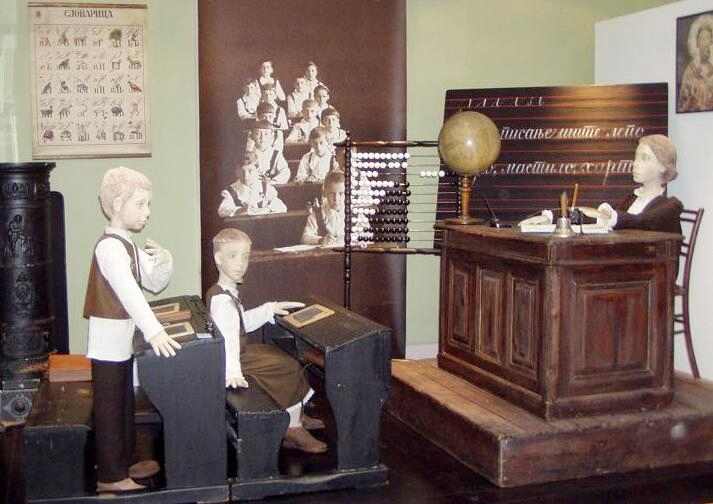
Figure 1.--This is the recreation of a Serbian primary classroom. I'm not sure about the date, but some time in the early 20th centuty. Note the abacus and the religion picture on the wall behind the teacher. Source: Serbian School Museum. |

|
We have only limited information on Serbian schools and school activities. We note a range of classroom activities in Sebian schools similar to that in other Europwan schools. Children mostly walk to school. Class rooms were very traditionally organized. We do not have much curriculum information yet. The abacus was used in math lessons. We do not know what role religion played in state schools. Apparently there was religious instruction in state schools. There were also religious-based schools where religion presumably played a larger role. After World War II, the Communists banned religion in school. We are less sure about modern schools. We do note school theatricals as well as art. We habe found several photographs of various school theatricals. This was a commom practice at most European schools. We are less sure about dance. Sports do not seem to have been very important in Serbian schools. There was calesthetics and drill, but sports seem to have been more of a club activity after school. This was the common practice in most European countries.
Children mostly walk to school. A teacher sends us a photograph of him and his walking bus. Rural schools were in villages where the children could also walk. We are less sure about secondary schools. Most children in rural areas did not go to secondary schools. Some children lived with realtives or board in the cities so they could attend secondary schools. Most children in the city probably walked to school. Some may have had bikes or taken public transport. We are not sure about current trends. Serbia is less prosperous than Western Europe, so many families do not have cars. Thus fewer parents drive the children to school than is common in Western Europe. We are not sure how common school buses are.
Class rooms were very traditionally organized. We do not have much curriculum information yet. The abacus was used in math lessons.
We do not know what role religion played in state schools. Apparently there was religious instruction in state schools. There were also religious-based schools where religion presumably played a larger role. After World War II, the Communists abnned religion in school. We are less sure about modern schools.
We do note school theatricals as well as art. We habe found several photographs of various school theatricals. This was a commom practice at most European schools. We are less sure about dance.
A British teacher in Belgrade tells us about a class project. The children are reading a Famous Five book. And the class is making a movie, ' Five and Us'. The children are quite enthusiastic about it. This is not of course a standard Serbian school actibity, but rather an idea conceived by a creative teacher.
Sports do not seem to have been very important in Serbian schools. There was calesthetics and drill, but sports seem to have been more of a club activity after school. This was the common practice in most European countries and continues to be the case..
We notice a range of special events at Serbian schools. Many seem similar to those held in other European schools. Like European schools in general there is not a strong emphasis on sports as in American schools. A Serbian teacher tells us about special maths events. "We had a maths Olympiad here yesterday. Have got a paper and thought I'd scan it and send it over. Forgot to take a photograph of the activity. The contest started by first giving everyone a chocolate bar. Later we'll get certificates for taking part and the high flyers will have medals and membership to the Academy of Mathematics Junior Maths Scholar Club. There is also the Universal International Maths Day computer contest in which contestents play others from around the world. All countries take part and its good fun."
Related Chronolgy Pages in the Boys' Historical Web Site
[The 1880s]
[The 1930s]
[The 1940s]
[The 1930s]
[The 1940s]
[The 1950s]
[The 1960s]
[The 1970s]
[The 1980s]
Related Style Pages in the Boys' Historical Web Site
[Long pants suits]
[Short pants suits]
[Socks]
[Eton suits]
[Jacket and trousers]
[Blazer]
[School sandals]
Navigate the Boys' Historical Clothing Web Page
[Return to Main Serbian school page]
[Return to Main Serbian page]
[Return to Main Serbian history page]
[Introduction]
[Activities]
[Biographies]
[Chronology]
[Clothing styles]
[Countries]
[Bibliographies]
[Contributions]
[FAQs]
[Glossaries]
[Images]
[Links]
[Registration]
[Tools]
[Boys' Clothing Home]
